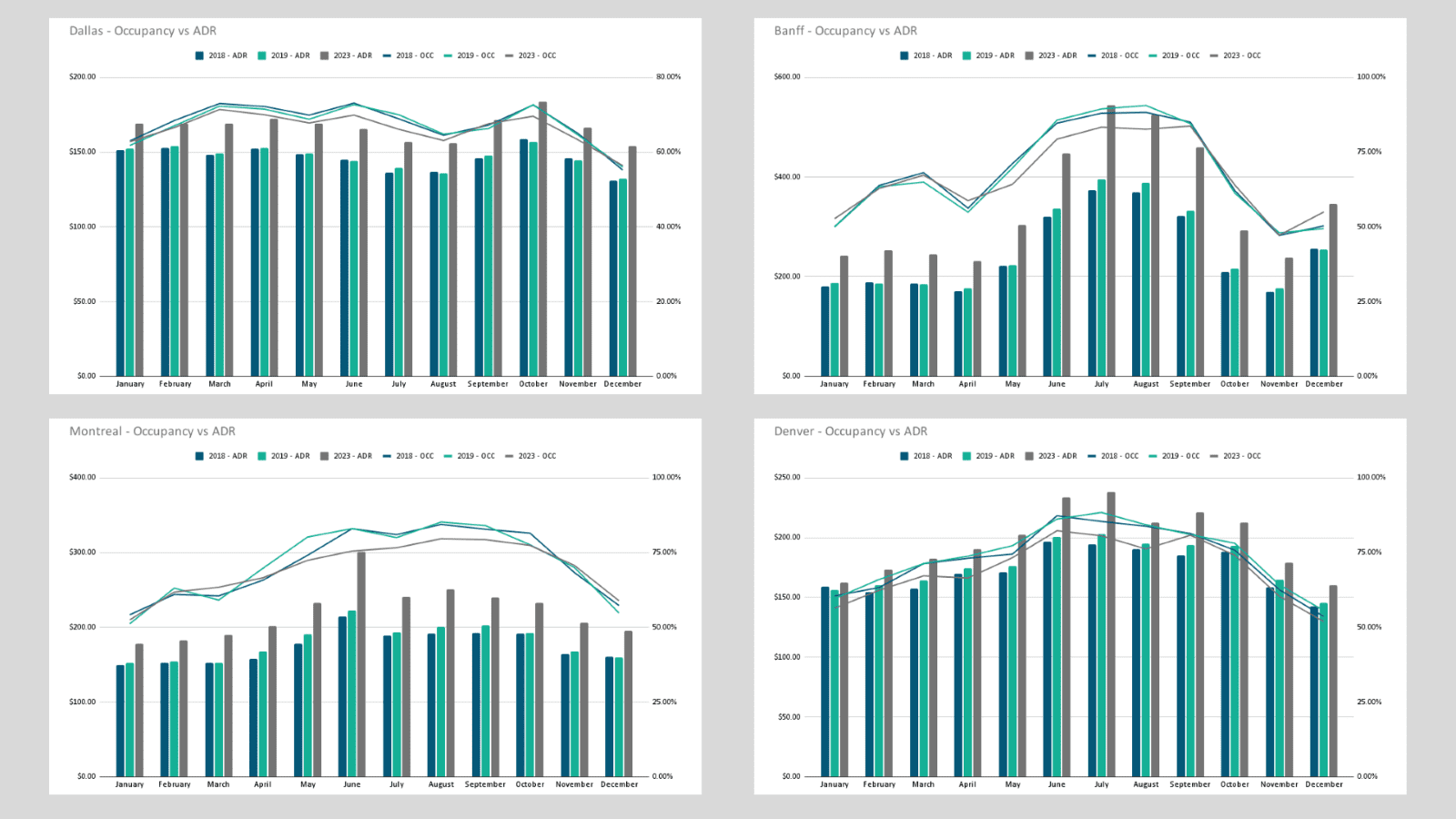The willingness to pay of consumers depends on their reason for travelling. Are they coming to your destination because it is a major tourist destination, a city with corporate demand or a conference center, or for a particular activity? Having worked with hotels in Mont-Tremblant briefly, I was curious about the market trends in Whistler, BC. Using CoStar data, I looked at their trends over the last few years (2018, 2019, 2023) and noticed something I found surprising: while occupancy is almost the same in the summer months as it is in the winter, the ADR is almost half as high.

I’ve looked at a lot of occupancy and ADR charts throughout my career, and there is typically some consistency in rate increasing as occupancy grows. Here are some examples of some different destinations and the trends I’ve typically seen:

So why is it that in Whistler the rate doesn’t grow in line with occupancy in all seasons? I believe that it has to do with the demand, specifically as it pertains to the reasons for travelling to Whistler at different times of the year. As a world-renowned ski destination, people visit Whistler in the winter to ski. The demand is extremely high as there are few alternatives available. While there are several reasons to visit Whistler in the summer, there are more destinations with a similar offering available at a variety of prices. For example, in British Columbia alone there are the Kootenay Rockies and Okanagan Valley to visit in the summer offering significantly lower rates than Whistler. There is less demand for Whistler hotels in the summer than in the winter because of the people traveling to Whistler and why.
It is important to consider not only competitors in your destination when determining rate strategies, but also competitive destinations. By understanding your hotel’s unique value proposition as well as your destination’s selling points, you can determine the “willingness to pay” of your clients and remain competitive in a multi-market playing field, no matter the season.

